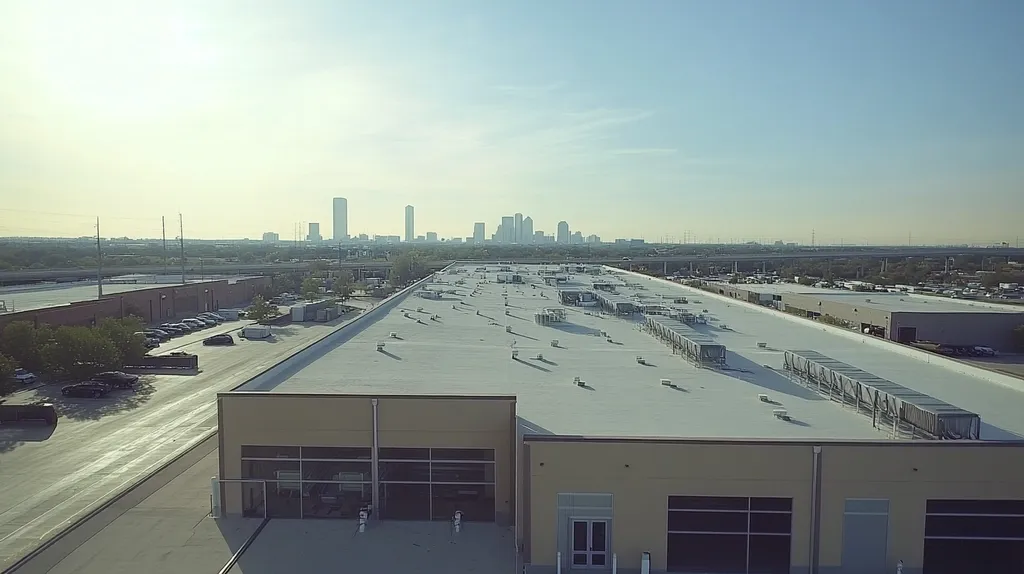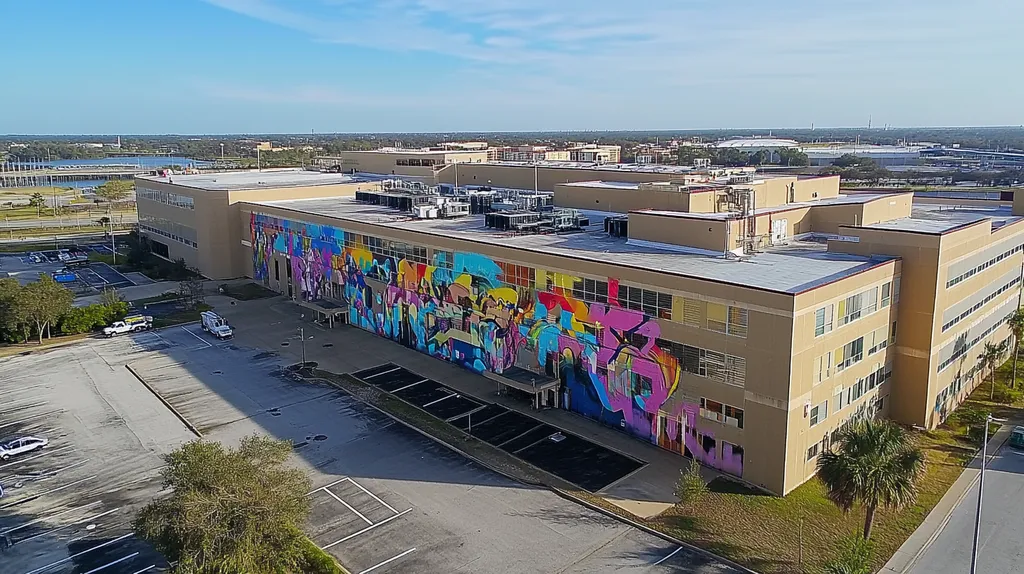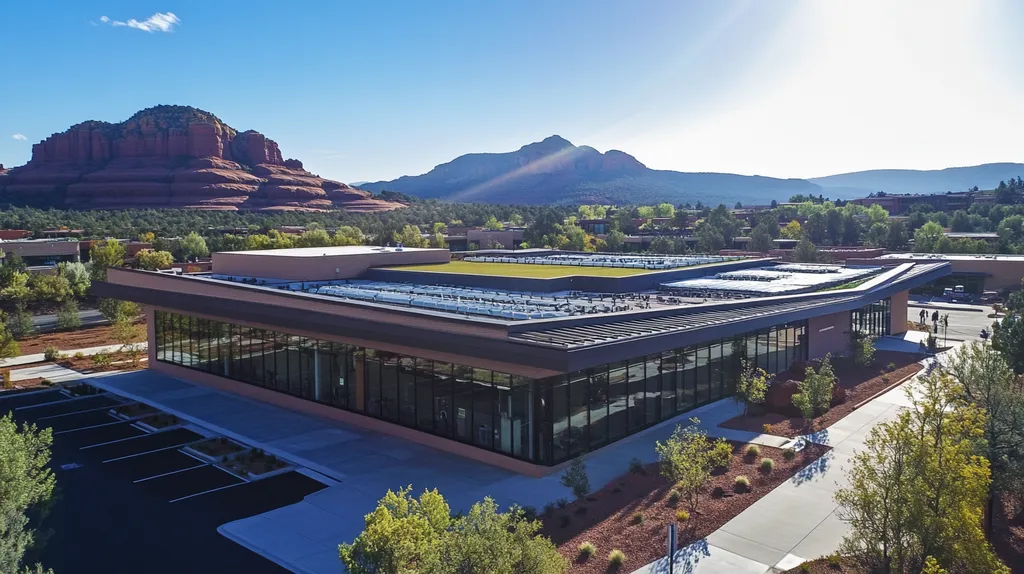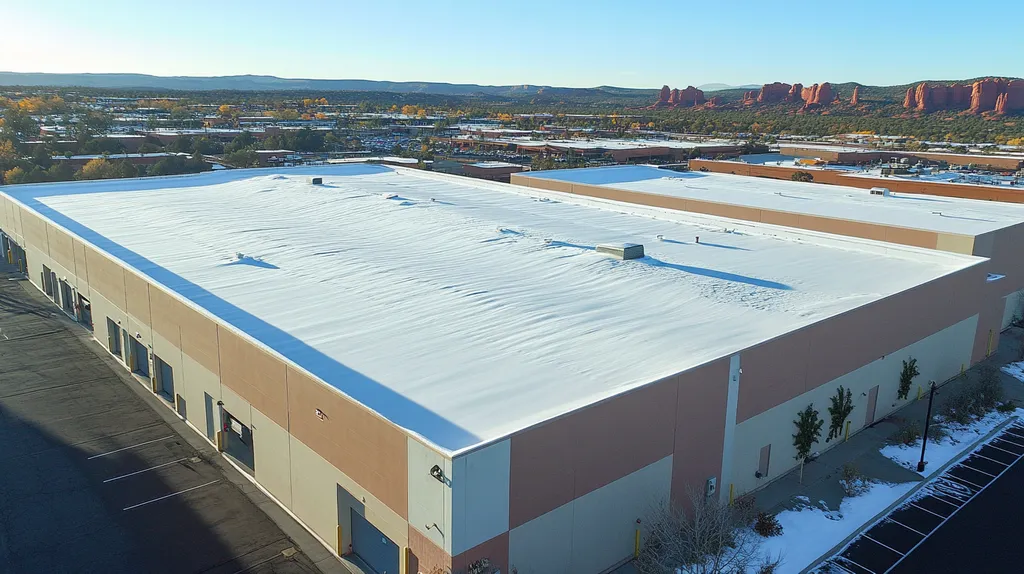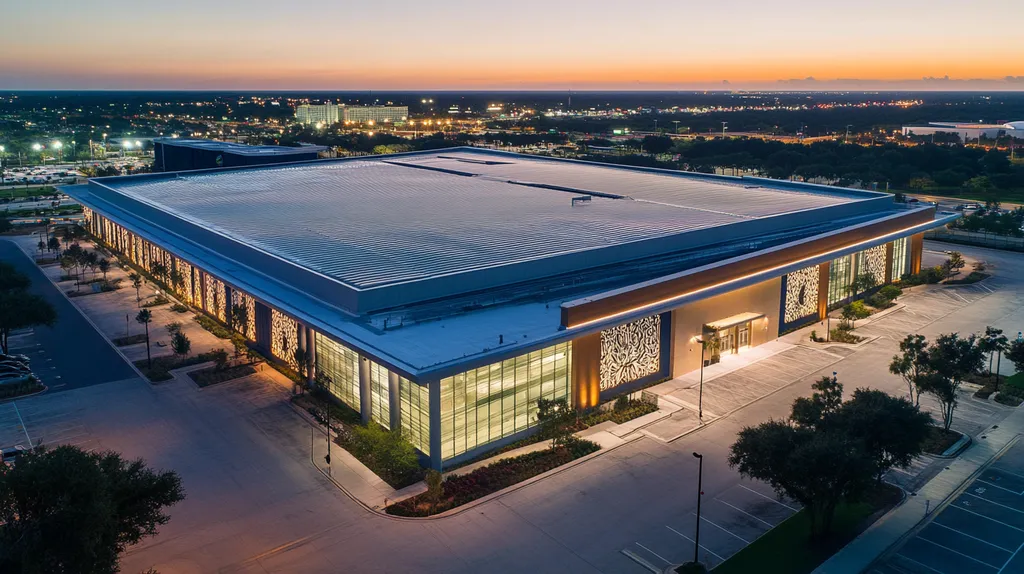Welcome to today’s Battle Royale featuring two roofing heavyweights: “Solar Panels” in the east corner versus “LED Skylights” in the west!
Tonight’s showdown pits these contenders against each other across six punishing rounds designed to test every aspect of their performance for Integrated Lighting for Commercial Roof Energy Needs.
At stake? Millions in potential costs, decades of building protection, and the critical performance demands of modern commercial and industrial facilities.
Our professional judging panel will evaluate each round on technical merit, real-world performance, and value delivery. After all six rounds, we’ll declare our ultimate champion.
Ladies and gentlemen, facility managers and building owners… it’s time to rumble!
ROUND 1: INITIAL COSTS & INSTALLATION
When it comes to commercial roofing energy solutions, the stakes couldn’t be higher. With utility costs skyrocketing and environmental regulations tightening, property owners face a critical choice between solar panels and LED skylights that will impact their bottom line for decades.
Beyond the immediate price tag, these installations fundamentally alter building infrastructure and energy consumption patterns. Making the wrong choice now could mean missing out on substantial long-term savings or dealing with unnecessary complexity.
Material Expenses
The material costs between these two solutions show stark differences. Solar panel systems typically demand $15-25 per square foot for commercial-grade equipment, with premium systems pushing $40 per square foot before installation costs.
LED skylights generally run $8-15 per square foot for materials, representing a significantly lower initial investment. Integrated dynamic daylight and skylight technologies can provide total energy savings of 0.8 – 13.9% and lighting savings up to 26% for office buildings and 58% for retail buildings. (source: Carnegie Mellon University)
While both options offer energy savings, the substantially higher material costs of solar panels make this decision clear.
ADVANTAGE: LED Skylights
Installation Complexity
Solar panel installation involves multiple technical challenges. These systems require structural reinforcement, complex electrical work, and careful waterproofing around numerous roof penetrations.
The process also demands coordination between roofers, electricians, and solar specialists. Permit requirements and utility interconnection add additional layers of complexity that can stretch timelines.
LED skylight installation, while not simple, involves fewer moving parts. The process primarily requires careful placement and waterproofing of pre-manufactured units.
ADVANTAGE: LED Skylights
Project Timeline
Solar installations typically stretch 4-8 weeks from start to finish. Permitting alone can take 2-3 weeks, while physical installation requires another 1-2 weeks, followed by inspections and utility approval.
LED skylight projects move considerably faster. Most installations complete within 5-7 working days, including preparation and weatherproofing.
The dramatic difference in project duration makes this an easy call.
ADVANTAGE: LED Skylights
ROUND 1 WINNER: LED Skylights
ROUND 2: DURABILITY & LIFESPAN
Let’s cut through the marketing hype and face reality: Every commercial roof is one storm away from becoming an expensive headache. With energy systems now integrated into roofing infrastructure, durability isn’t just about keeping water out – it’s about maintaining critical power and lighting systems that your business depends on.
The wrong choice between solar panels and LED skylights could leave you with failing equipment, compromised building envelope integrity, and skyrocketing maintenance costs. Let’s examine how these contenders hold up when the going gets tough.
Weather Resistance
Commercial roofs take a beating from UV radiation, temperature swings, wind, hail, and debris. Any rooftop equipment must withstand these assaults while maintaining water-tight integrity and operational efficiency.
Solar panels excel here with their tempered glass construction and rigorous testing standards. Quality panels are certified to withstand one-inch hail at terminal velocity and wind loads exceeding 140 mph, while maintaining 80% efficiency for 25+ years.
LED skylights present more vulnerabilities with their larger surface areas and multiple seam points. Even premium polycarbonate domes can yellow and crack over time, while gaskets and flashing require regular inspection and maintenance to prevent leaks.
ADVANTAGE: Solar Panels
System Longevity
Solar panels operate with virtually no moving parts, relying on solid-state photovoltaic cells that degrade very slowly. Most manufacturers guarantee 80% power output after 25 years, with many systems lasting 30+ years.
The LEDs in skylight systems boast impressive 50,000-hour ratings, but that’s only part of the equation. Drivers, sensors, and control systems typically need replacement every 5-10 years. The skylight housing itself becomes the weak link, often requiring significant maintenance or replacement within 15-20 years.
When comparing total system longevity, solar panels clearly demonstrate superior durability and reliability over time.
ADVANTAGE: Solar Panels
Maintenance Requirements
Solar panel maintenance is remarkably simple – occasional cleaning and annual electrical checks keep most systems running optimally. Even in harsh environments, maintenance costs typically stay under $500 annually for commercial installations.
LED skylights demand more frequent attention. Exterior surfaces need regular cleaning to maintain light transmission. Gaskets require inspection and replacement to prevent leaks. Control systems need periodic calibration and component updates.
The stark contrast in maintenance demands and associated costs makes this an easy call.
ADVANTAGE: Solar Panels
ROUND 2 WINNER: Solar Panels
ROUND 3: PERFORMANCE FACTORS
In today’s high-stakes commercial environment, rooftop energy solutions must deliver measurable results, not just marketing promises. With energy costs consuming up to 30% of building operating budgets, the choice between solar panels and LED skylights can make or break annual profits.
Property owners can’t afford to guess wrong on performance metrics that will impact their facilities for decades. Let’s examine how these contenders measure up when we strip away the hype and focus on real-world results.
Energy Production and Efficiency
Solar panels turn every square foot of unused roof space into a power plant, generating roughly 8-10 watts per square foot under optimal conditions. Modern commercial systems operate at 15-20% efficiency, providing predictable power generation during daylight hours.
LED skylights take a different approach by eliminating energy demand rather than generating new supply. By harvesting natural daylight, they can slash lighting costs while providing superior illumination quality.
While both solutions reduce grid dependency, solar panels’ ability to generate substantial power gives them the edge in pure energy terms.
ADVANTAGE: Solar Panels
Performance Reliability
Solar panel output remains remarkably consistent year after year, with degradation rates under 0.5% annually. Modern panels maintain 90%+ efficiency even in partial shade or extreme temperatures.
LED skylight performance depends heavily on weather conditions and seasonal variations. Cloudy days and winter months can significantly reduce their effectiveness, requiring supplemental electrical lighting.
The predictable output of solar technology makes this comparison clear.
ADVANTAGE: Solar Panels
Workspace Enhancement
Solar panels operate silently above occupants’ heads, with no direct impact on the indoor environment. Their benefits remain purely financial and environmental.
LED skylights transform interior spaces with natural daylight that improves worker productivity and wellbeing. Research shows they can reduce lighting energy by up to 58% in retail buildings while creating more appealing environments.
The dramatic improvement in workspace quality makes this an easy call.
ADVANTAGE: LED Skylights
ROUND 3 WINNER: Solar Panels
ROUND 4: MAINTENANCE REQUIREMENTS
In the high-stakes world of commercial roofing, maintenance isn’t just about fixing what’s broken – it’s about protecting million-dollar investments from becoming money pits. With integrated energy systems now perched atop buildings nationwide, the wrong maintenance strategy can turn today’s energy solution into tomorrow’s operational nightmare.
Property owners face a critical choice between two fundamentally different maintenance paths that will impact their facilities for decades. Let’s examine how these contenders stack up when the warranties expire and reality sets in.
Routine Inspection Requirements
Solar panel systems demand relatively simple inspection protocols. Quarterly visual checks and annual professional assessments typically suffice to maintain peak performance.
Most issues can be identified through automated monitoring systems that flag efficiency drops before they become critical. Physical inspections focus primarily on connection points and wiring integrity.
LED skylights require monthly visual inspections of glazing, gaskets, and flashing to catch potential water infiltration early. Control systems need quarterly calibration checks to maintain optimal performance.
The stark difference in inspection frequency and complexity makes this comparison clear.
ADVANTAGE: Solar Panels
Cleaning and Preventive Care
Solar panels typically need cleaning just 2-3 times annually in most climates. Simple water and soft-brush cleaning removes most debris and restores full efficiency.
Snow removal is rarely needed as panels’ dark surfaces and tilt promote natural clearing. Most systems automatically shut down if snow accumulation becomes problematic.
LED skylights demand monthly cleaning of both exterior and interior surfaces to maintain light transmission. Special cleaning solutions and techniques are required to avoid damaging sensitive coatings and gaskets.
ADVANTAGE: Solar Panels
Component Replacement
Solar panels operate with minimal moving parts, leading to very low replacement needs. Inverters typically need replacement every 10-15 years, while panels themselves last 25+ years.
LED skylights involve multiple components requiring periodic replacement. Light strips need changing every 5-7 years, while drivers and sensors often fail within a decade.
LED lighting does offer significant energy savings through reduced electricity usage and lower utility costs. (source: Roofing Today)
However, the frequency and complexity of component replacements make this comparison straightforward.
ADVANTAGE: Solar Panels
ROUND 4 WINNER: Solar Panels
ROUND 5: SUSTAINABILITY CREDENTIALS
With commercial buildings consuming 35% of U.S. electricity and generating nearly one-third of all carbon emissions, sustainability isn’t just a buzzword – it’s a business imperative. Property owners face mounting pressure from regulators, tenants, and investors to demonstrate meaningful environmental impact.
The choice between solar panels and LED skylights will shape a building’s environmental footprint for decades. Making the wrong choice now means missing critical sustainability targets and falling behind competitors in the race toward net-zero operations.
Energy Efficiency
Solar panels deliver measurable renewable energy generation, converting 15-20% of solar radiation into usable electricity. Modern commercial installations can produce 30-40 kilowatt hours per square foot annually, directly offsetting grid power consumption.
LED skylights focus on demand reduction rather than generation. Their advanced controls and natural daylighting can reduce lighting energy loads by up to 70% in some building types, while integration with HVAC systems can cut total building energy usage by up to 20%. (source: FacilitiesNet)
Both technologies deliver significant efficiency gains, making this category too close to call.
ADVANTAGE: TIE
Carbon Footprint
Solar panels eliminate approximately 40 pounds of carbon emissions per square foot annually through direct power generation. Their carbon payback period – the time needed to offset manufacturing emissions – typically runs 1-2 years in commercial applications.
LED skylights reduce carbon emissions indirectly by lowering electricity demand. However, their impact varies widely based on local power grid composition and weather patterns.
The consistent, measurable carbon reduction from solar generation makes this comparison clear.
ADVANTAGE: Solar Panels
Material Sustainability
Solar panels consist primarily of recyclable materials including glass, aluminum, and silicon. While current recycling infrastructure remains limited, the industry is rapidly developing end-of-life recovery processes.
LED skylights incorporate more complex materials including polycarbonates, electronic components, and specialized coatings. These create greater recycling challenges and potential environmental impacts at disposal.
Solar’s simpler material composition and developing recycling channels give it a clear edge in long-term sustainability.
ADVANTAGE: Solar Panels
ROUND 5 WINNER: SOLAR PANELS
ROUND 6: SPECIALIZED APPLICATIONS
In today’s specialized commercial environments, from cold storage facilities to manufacturing plants, choosing the wrong integrated lighting solution can cripple operations and devastate budgets. With facility managers juggling complex operational demands and stringent regulatory requirements, the stakes couldn’t be higher.
These specialized environments demand lighting solutions that can withstand extreme conditions while delivering consistent performance. Making the wrong choice means compromising safety, productivity, and profitability.
Extreme Environment Performance
In harsh industrial settings, equipment faces constant assault from temperature extremes, caustic chemicals, and airborne particulates. These conditions quickly separate robust solutions from marketing hype.
Solar panels demonstrate remarkable resilience in extreme environments, with specialized coatings that resist chemical exposure and tempered glass that withstands intense thermal cycling. Their sealed construction prevents contamination while maintaining consistent power generation.
LED skylights struggle in these conditions. Their polycarbonate domes can degrade under chemical exposure, while complex electronic components often fail prematurely in extreme temperatures.
ADVANTAGE: Solar Panels
Process-Critical Applications
Many specialized facilities require precise lighting conditions to maintain quality control and operational efficiency. Inconsistent illumination can disrupt critical processes and compromise product quality.
Solar panels contribute to overall energy reduction but don’t directly impact workspace illumination. Their output variations can actually complicate power management for sensitive equipment.
LED skylights excel here by providing consistent, controllable natural light that enhances visibility and reduces eye strain. Their advanced controls maintain optimal illumination levels regardless of external conditions.
ADVANTAGE: LED Skylights
Regulatory Compliance
Specialized facilities often face strict regulatory requirements for lighting levels, energy efficiency, and safety standards. Non-compliance can result in costly fines and operational shutdowns.
Solar panels mainly impact energy metrics but offer limited benefits for specific lighting requirements. Their complexity can actually create additional compliance hurdles in regulated environments.
LED skylights directly address both lighting and energy regulations. Their integrated daylight harvesting systems provide documented compliance with illumination standards while delivering significant energy savings that exceed most regulatory thresholds.
ADVANTAGE: LED Skylights
ROUND 6 WINNER: LED Skylights
AND THE WINNER IS…
After six grueling rounds of technical analysis, with billions in commercial property value hanging in the balance, we have our verdict!
In a stunning display of technical dominance, SOLAR PANELS emerge victorious, claiming four out of six rounds in this heavyweight bout! Their knockout performance in durability, maintenance, performance, and sustainability proved decisive in securing the championship belt.
The champion’s superior weather resistance, minimal maintenance requirements, and consistent energy production demonstrated why solar technology remains the undisputed king of commercial rooftop energy solutions.
But don’t count LED Skylights out! Their impressive victories in initial costs and specialized applications remind us why they remain a formidable contender, particularly in retail environments and facilities requiring precise lighting control.
*Important Notice to Property Owners*
While this analysis reflects general industry trends, every commercial property faces unique challenges. Local climate conditions, building specifications, and operational requirements can significantly impact system performance. Professional evaluation of your specific situation is essential before making any roofing decisions.
Remember, champions: In the high-stakes arena of commercial roofing, victory doesn’t come from blindly following the crowd – it comes from matching your facility’s unique requirements with the right contender’s strengths. Now get out there and make your building a winner!
FREQUENTLY ASKED QUESTIONS
Q. What are the installation costs for commercial roof solutions?
A. Installation costs vary widely; solar panels can run $15-40 per square foot, while LED skylights typically fall between $8-15 per square foot. The latter offers significantly lower initial expenses, but hidden installation complexities could inflate total project costs.
Q. How durable are solar panels compared to industrial roof skylights?
A. Solar panels dominate in durability, boasting tempered glass and excellent weather resistance. In contrast, LED skylights are more vulnerable to UV damage and require regular maintenance to avoid leaks, making them less reliable in harsh conditions.
Q. Which solution offers better performance on a commercial roof?
A. Solar panels excel in energy production, generating significant power, while LED skylights reduce energy consumption through natural lighting. If you want peak energy output, solar panels take the cake.
Q. What are the maintenance requirements for industrial roofs?
A. Maintenance for solar panels is minimal, requiring occasional cleaning and simple inspections. Conversely, LED skylights need extensive monthly checks, regular cleanings, and more complicated upkeep, making solar the easier choice for busy property managers.
Q. Which option is more sustainable for commercial roofs?
A. Solar panels clearly win on carbon reduction, slashing emissions by utilizing renewable energy. While LED skylights lessen electricity use, their impact on carbon footprints is less direct, muddling the comparison in sustainability.
Q. Are there specialized applications for solar panels or skylights?
A. Solar panels are robust for extreme environments but don’t help specific lighting needs. In contrast, LED skylights shine in providing excellent visibility for specialized tasks, catering to unique operational demands that solar cannot fulfill.
Q. How do solar panels and skylights compare in initial versus long-term costs?
A. Initially, skylights are cheaper to install, but their complex needs can incur higher long-term costs. Solar panels, while pricier upfront, typically offer more extended savings on energy bills and lower maintenance needs, making them a worthy long-term investment.

